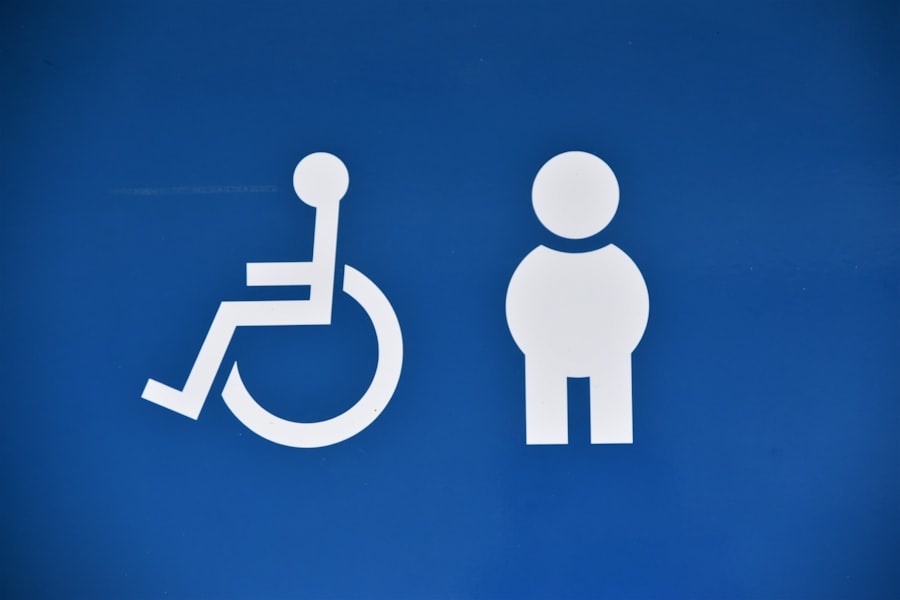The intersection of technology and disability has become a focal point of discussion in recent years, as advancements in digital tools and devices have the potential to significantly enhance the quality of life for individuals with disabilities. Historically, people with disabilities have faced numerous barriers that hinder their ability to participate fully in society. However, the rapid evolution of technology has opened new avenues for accessibility, allowing for greater independence and empowerment.
From mobility aids to communication devices, the landscape of assistive technology is continually expanding, providing innovative solutions that cater to a diverse range of needs. This transformation is not merely about convenience; it represents a fundamental shift in how society perceives disability, moving from a model of limitation to one of possibility. As we delve deeper into this topic, it is essential to recognize that technology is not a panacea for all challenges faced by individuals with disabilities.
While it offers remarkable tools that can facilitate daily living, the effectiveness of these technologies often hinges on their design and implementation. Accessibility must be at the forefront of technological development, ensuring that products are not only functional but also user-friendly for those with varying abilities. Moreover, the conversation surrounding technology and disability must include the voices of those it aims to serve.
By prioritizing inclusivity in both design and application, we can create a future where technology acts as a bridge rather than a barrier, fostering an environment where everyone has the opportunity to thrive.
Key Takeaways
- Technology has the potential to empower individuals with disabilities by providing them with tools and resources to enhance their quality of life.
- Assistive technologies for mobility, such as wheelchairs and prosthetics, play a crucial role in enabling individuals with disabilities to move around independently.
- Communication and accessibility tools, such as screen readers and speech recognition software, help individuals with disabilities to access and interact with digital content and communication platforms.
- Adaptive learning and work tools, such as specialized software and ergonomic equipment, enable individuals with disabilities to participate in education and employment opportunities.
- Transportation and navigation assistance technologies, such as GPS and ride-sharing apps, help individuals with disabilities to travel and navigate their surroundings with greater ease and independence.
- Social inclusion and community engagement technologies, such as social media and virtual reality platforms, provide opportunities for individuals with disabilities to connect with others and participate in various activities.
- The future of technology and disability empowerment holds promise for continued innovation and development of new tools and solutions to further enhance the lives of individuals with disabilities.
Assistive Technologies for Mobility
Advancements in Mobility Aids
Mobility is one of the most critical aspects of independence for individuals with disabilities, and assistive technologies have made significant strides in this area. Traditional mobility aids such as wheelchairs and walkers have evolved into sophisticated devices equipped with advanced features that enhance user experience. For instance, powered wheelchairs now come with customizable settings that allow users to adjust speed, direction, and even seating position with ease.
Emerging Innovations in Mobility
Additionally, innovations like exoskeletons are emerging, enabling individuals with spinal cord injuries to stand and walk again, thereby redefining what mobility means for them. These advancements not only improve physical mobility but also contribute to psychological well-being by fostering a sense of autonomy and self-efficacy.
The Role of Smart Technology in Mobility Aids
Moreover, the integration of smart technology into mobility aids has further revolutionized this field. Devices equipped with sensors can detect obstacles in real-time, providing users with auditory or haptic feedback to navigate their environment safely. GPS-enabled mobility aids allow users to plan routes that are accessible and avoid potential hazards.
Community-Driven Approach to Mobility Solutions
Furthermore, the rise of mobile applications designed specifically for individuals with disabilities has created a community-driven approach to mobility solutions. Users can share information about accessible routes, public transportation options, and even local businesses that cater to their needs. This collaborative effort not only enhances individual mobility but also fosters a sense of community among users, reinforcing the idea that technology can be a powerful ally in overcoming physical barriers.
Communication and Accessibility Tools

Communication is a fundamental human right, yet many individuals with disabilities face significant challenges in expressing themselves or understanding others. Fortunately, advancements in communication technology have led to the development of various tools designed to bridge these gaps. Augmentative and alternative communication (AAC) devices have become increasingly sophisticated, offering users a range of options from simple picture boards to complex speech-generating devices.
These tools empower individuals with speech impairments to communicate effectively, facilitating social interactions and enhancing their ability to participate in educational and professional settings. In addition to AAC devices, software applications have emerged that cater specifically to the needs of individuals with disabilities. For example, text-to-speech and speech-to-text applications enable users to convert written text into spoken words or vice versa, making communication more accessible across different platforms.
Furthermore, social media platforms are increasingly incorporating accessibility features such as automatic captioning for videos and screen reader compatibility, allowing individuals with hearing or visual impairments to engage more fully in online conversations. The importance of these tools cannot be overstated; they not only enhance communication but also promote social inclusion by enabling individuals with disabilities to connect with others on their terms.
Adaptive Learning and Work Tools
The realm of education and employment has also been transformed by adaptive technologies that cater to the unique needs of individuals with disabilities. In educational settings, personalized learning tools have emerged that allow students to engage with content in ways that suit their learning styles. For instance, software programs that offer adjustable text sizes, background colors, and audio support can significantly enhance the learning experience for students with visual impairments or dyslexia.
Additionally, interactive learning platforms provide opportunities for hands-on engagement, making it easier for students with various disabilities to grasp complex concepts. In the workplace, adaptive technologies are equally vital in fostering an inclusive environment where individuals with disabilities can thrive. Job-specific tools such as screen magnifiers, ergonomic keyboards, and voice recognition software enable employees to perform their tasks efficiently while accommodating their unique needs.
Moreover, remote work technologies have gained prominence in recent years, allowing individuals with disabilities greater flexibility in their work environments. This shift not only promotes inclusivity but also challenges traditional notions of productivity by demonstrating that diverse work styles can lead to successful outcomes. As organizations continue to embrace adaptive technologies, they pave the way for a more equitable workforce where everyone has the opportunity to contribute meaningfully.
Transportation and Navigation Assistance
Transportation remains one of the most significant challenges faced by individuals with disabilities, often limiting their ability to access essential services and participate in community life. However, advancements in transportation technology are beginning to address these barriers through innovative solutions designed specifically for accessibility. Ridesharing services have made strides in accommodating passengers with disabilities by offering vehicles equipped with ramps or lifts and trained drivers who understand the unique needs of their riders.
This shift has not only improved access to transportation but has also fostered a sense of independence among users who previously relied on family or friends for mobility. In addition to ridesharing services, navigation assistance technologies are playing a crucial role in enhancing mobility for individuals with disabilities. GPS applications now include features that highlight accessible routes and provide real-time updates on public transportation options tailored for users with mobility challenges.
Furthermore, indoor navigation systems are being developed for public spaces such as airports and shopping malls, allowing individuals with visual impairments to navigate complex environments confidently. These advancements signify a broader commitment to inclusivity in transportation systems, ensuring that individuals with disabilities can move freely within their communities without facing unnecessary obstacles.
Social Inclusion and Community Engagement

Breaking Down Barriers with Technology
Social inclusion is a vital aspect of well-being for individuals with disabilities, yet many still encounter barriers that hinder their ability to engage fully in community life. Technology plays a pivotal role in breaking down these barriers by facilitating connections and fostering a sense of belonging among individuals with diverse abilities. Online platforms dedicated to social networking provide spaces where people can share experiences, seek support, and build friendships without the constraints imposed by physical limitations.
Empowering Authentic Expression and Connection
These virtual communities empower individuals to express themselves authentically while connecting with others who share similar experiences. Moreover, technology is increasingly being utilized by organizations focused on promoting social inclusion through community engagement initiatives. Virtual events and online workshops have become commonplace, allowing individuals with disabilities to participate in activities they may not have been able to access otherwise due to physical constraints or transportation challenges.
Creating Awareness and Promoting Inclusion
Additionally, local governments and nonprofits are leveraging technology to create awareness campaigns aimed at fostering understanding and acceptance within communities. By highlighting the contributions of individuals with disabilities through digital storytelling and social media outreach, these initiatives work towards dismantling stereotypes and promoting a more inclusive society where everyone is valued.
Future of Technology and Disability Empowerment
Looking ahead, the future of technology and disability empowerment holds immense promise as innovations continue to emerge at an unprecedented pace. The ongoing development of artificial intelligence (AI) presents exciting opportunities for creating personalized solutions tailored specifically to individual needs. For instance, AI-driven applications could analyze user behavior patterns and preferences to offer customized recommendations for assistive technologies or accessibility features across various platforms.
This level of personalization has the potential to revolutionize how individuals interact with technology, making it more intuitive and responsive to their unique circumstances. Furthermore, as society becomes increasingly aware of the importance of inclusivity in technological design, there is a growing movement advocating for universal design principles that prioritize accessibility from the outset. This shift signifies a collective commitment to ensuring that all individuals—regardless of ability—can benefit from technological advancements without facing unnecessary barriers.
As we continue on this trajectory toward greater inclusivity, it is essential that we remain vigilant in amplifying the voices of individuals with disabilities in discussions surrounding technology development. By fostering collaboration between technologists and users alike, we can create a future where technology serves as a powerful tool for empowerment—enabling individuals with disabilities not only to navigate their world but also to thrive within it.
For those interested in how technology can enhance the lives of individuals with disabilities, it’s also worth exploring the broader impact of digital tools in various sectors. A related article that delves into the advancements in software tools is The Best Software for Social Media Management in 2023. This piece highlights how the latest software can streamline social media tasks, which is particularly beneficial for people with disabilities who use social media platforms to connect, advocate, and run businesses more efficiently. The article provides insights into how these tools can reduce the physical strain and manage complex tasks with ease, further empowering users by making digital communication more accessible.
FAQs
What is assistive technology?
Assistive technology refers to devices, equipment, or systems that help people with disabilities to perform tasks that they would otherwise have difficulty or inability to do. This can include mobility aids, hearing aids, communication devices, and more.
How does technology empower people with disabilities?
Technology empowers people with disabilities by providing them with tools and resources to increase their independence, improve their quality of life, and participate more fully in society. This can include assistive devices, accessibility features in software and apps, and specialized tools for communication and mobility.
What are some examples of assistive technology for people with disabilities?
Examples of assistive technology include screen readers for individuals with visual impairments, hearing aids for individuals with hearing impairments, wheelchairs and mobility scooters for individuals with mobility impairments, and communication devices for individuals with speech impairments.
How does technology improve accessibility for people with disabilities?
Technology improves accessibility for people with disabilities by providing features such as screen readers, voice recognition software, captioning, and alternative input devices. These features enable individuals with disabilities to access and use digital content, communicate, and navigate the physical environment more easily.
What are the benefits of technology for people with disabilities?
The benefits of technology for people with disabilities include increased independence, improved communication, enhanced mobility, access to education and employment opportunities, and greater social inclusion. Technology can also help individuals with disabilities to overcome barriers and participate more fully in everyday activities.

